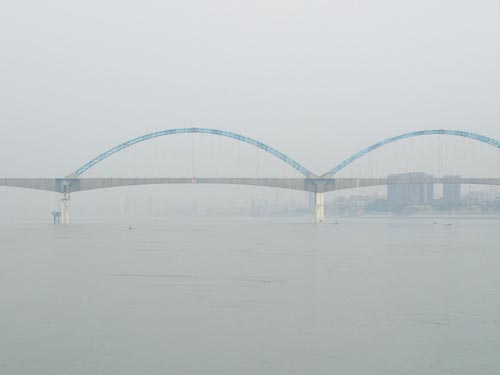
A new bridge spans the Yangtze River.
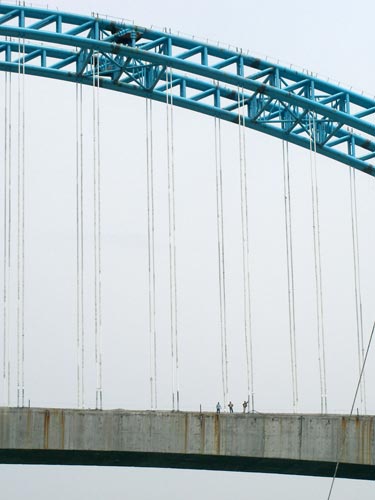

A traditional Chinese-style pagoda. These were built as homes to appease the evil dragons that lived in the river and caused floods.
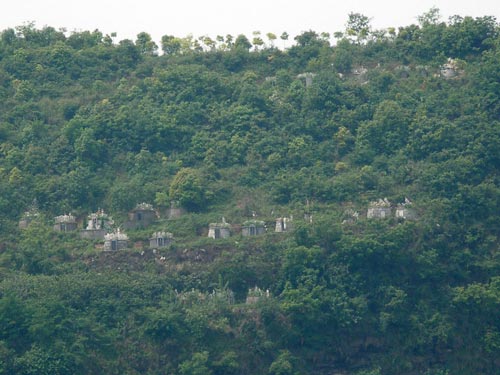
Highly decorated graves cover the hillside on the other side of the river.
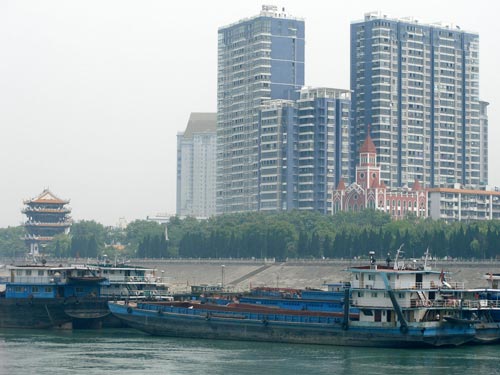
Giant new apartment buildings tower above the city.
Countless new high rises began to appear with the start of the Three Gorges Dam project. The city's population is currently at 3 million, with over 250,000 just here for the jobs created by building the giant dam.
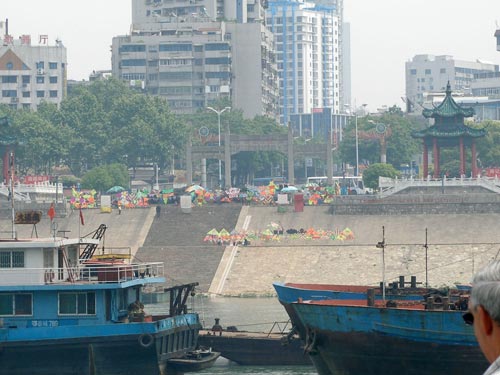
Kites decorate the long wharf.
Before 1949, the wharf area was only 1/3 mile in length and so poorly equipped that no ships could moor for direct loading and unloading. After 1949 (when new China was founded), more than 50 wharves have been constructed so that the area is now almost 9 miles long. The wharves can handle dozens of 2,000-ton vessels simultaneously.
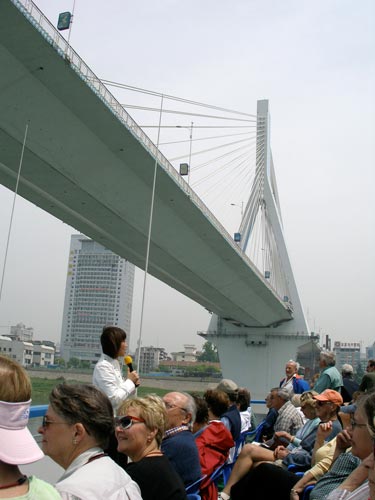
Natalie continues her tour as we pass under a cable-stayed bridge.
The channel to the shiplock
We then turned off the river and headed down a long channel, at the end of which was the shiplock.
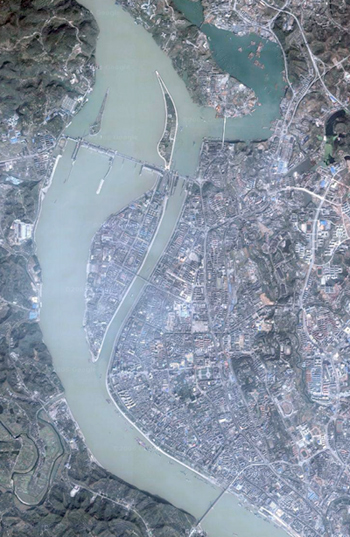
A satellite map shows an overview of the dam and shiplock. Two small islands, Gezhouba and Xiba, divide the river into three channels.
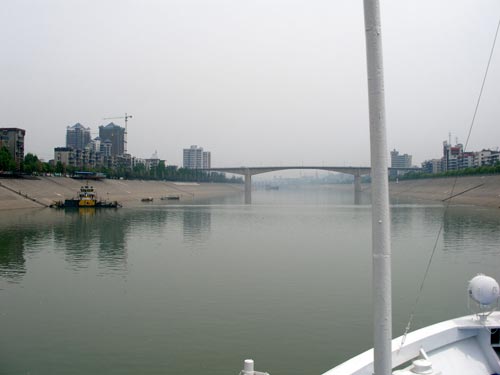
Heading toward the shiplock

Past meets present as this traditional pagoda is flanked by giant modern towers of steel.
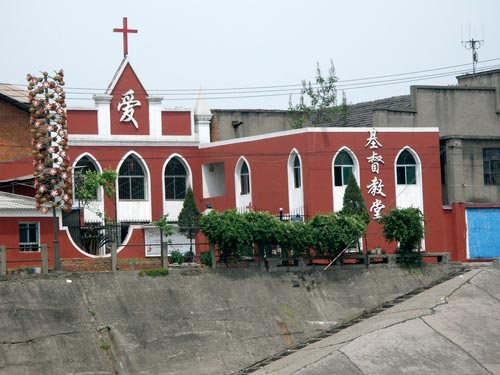
Christianity has existed in China since at least the 7th century.
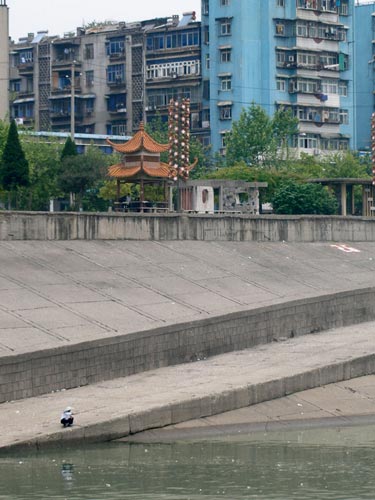
Fishing by the channel
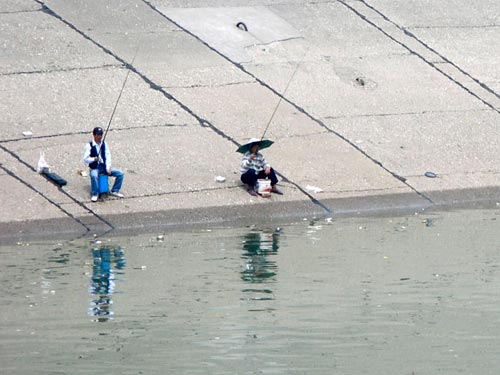
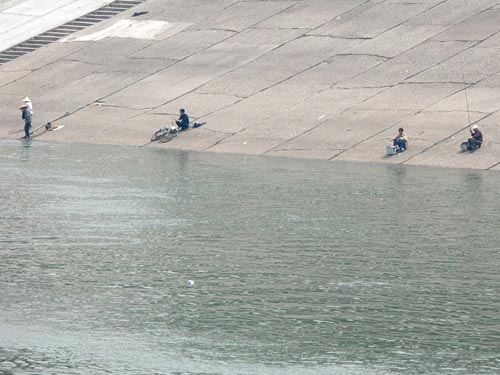

Sanpan
The sanpan (or sampan) is a relatively flat-bottomed Chinese wooden boat about 12 to 15 feet long. Some include a small shelter on board, and may be used as a permanent habitation on inland waters. They are generally used for fishing or transportation in coastal areas or rivers, since they do not have the means to survive rough weather. The word originates from san (three) and pan (board), since the keelless boats are generally made of at least three planks. Traditionally propelled by a paddle, pole or oars, more modern ones are outboard-motor powered.
Gezhou Dam (or Gezhouba Water Control Project)
Gezhou Dam was built from 1970 to 1988. It is 1.6 miles long, 230 feet high, and has three shiplocks and two power stations. The lake created by the dam is 20 miles long.
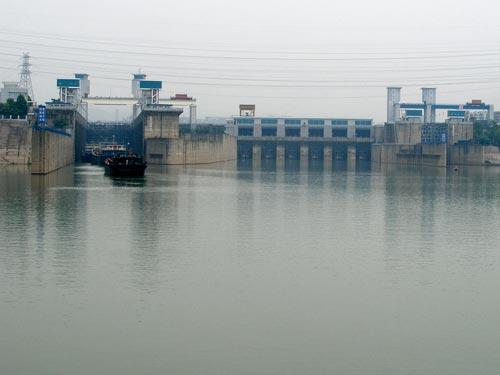
As a tourist boat, we didn't have to wait in a long line to use the shiplock, unlike everybody else. We are one of the three largest ships on the river.
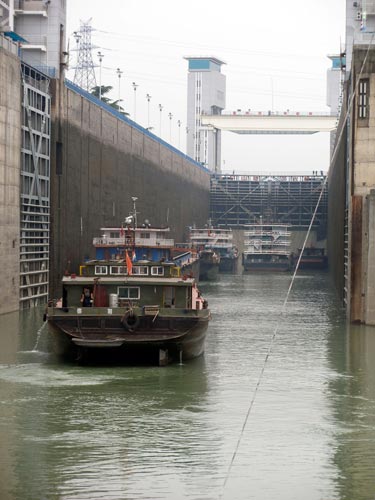
Pulling in
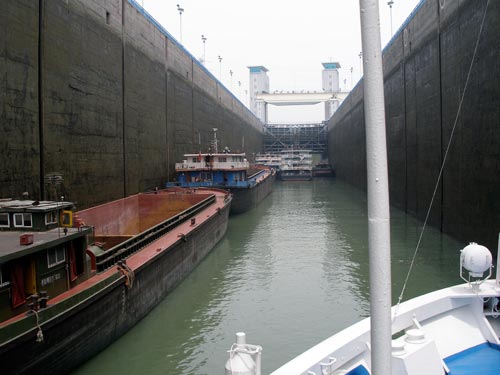
Squeezing into position

The ships are packed in very close to one another.
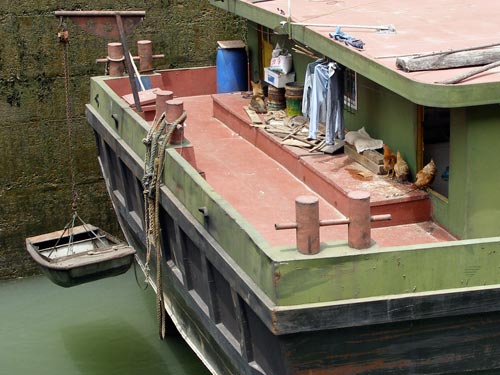
Chickens enjoy some breakfast on the back deck.
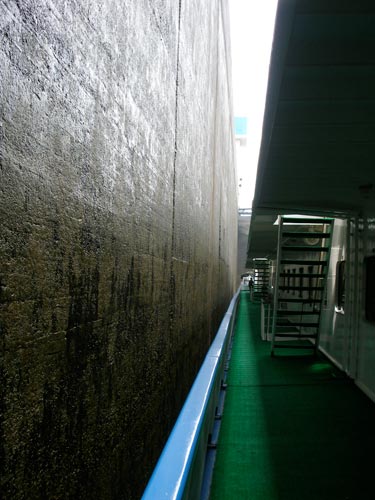
Not much room to spare!
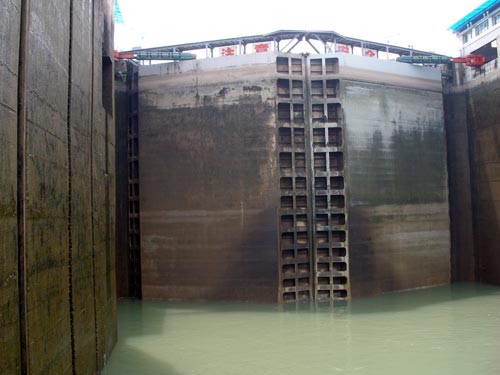
Each gate weighs 500 tons.
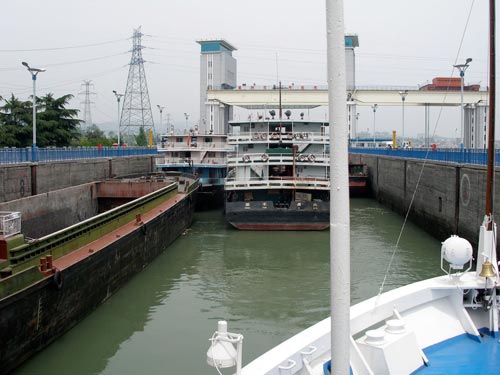
It takes 22 minutes for the water level to rise to the top. The whole experience is very fast and very smooth.
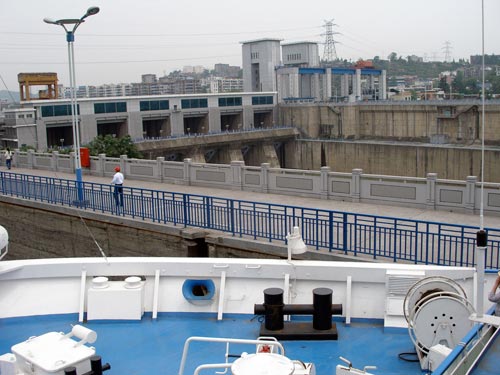
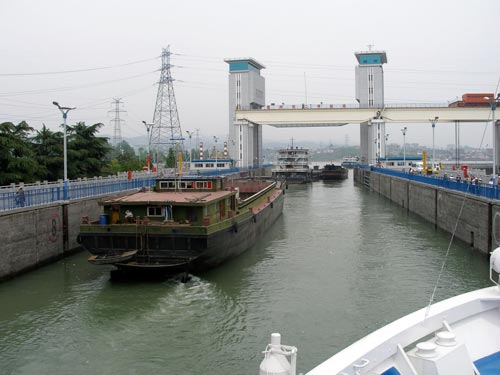
Heading out of the shiplock
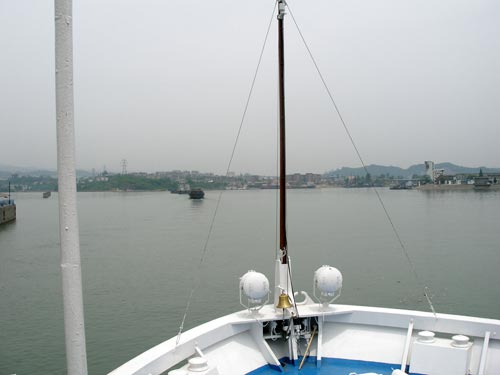
Back on the river
After passing through the shiplock, we began our exciting journey into Xiling Gorge.

